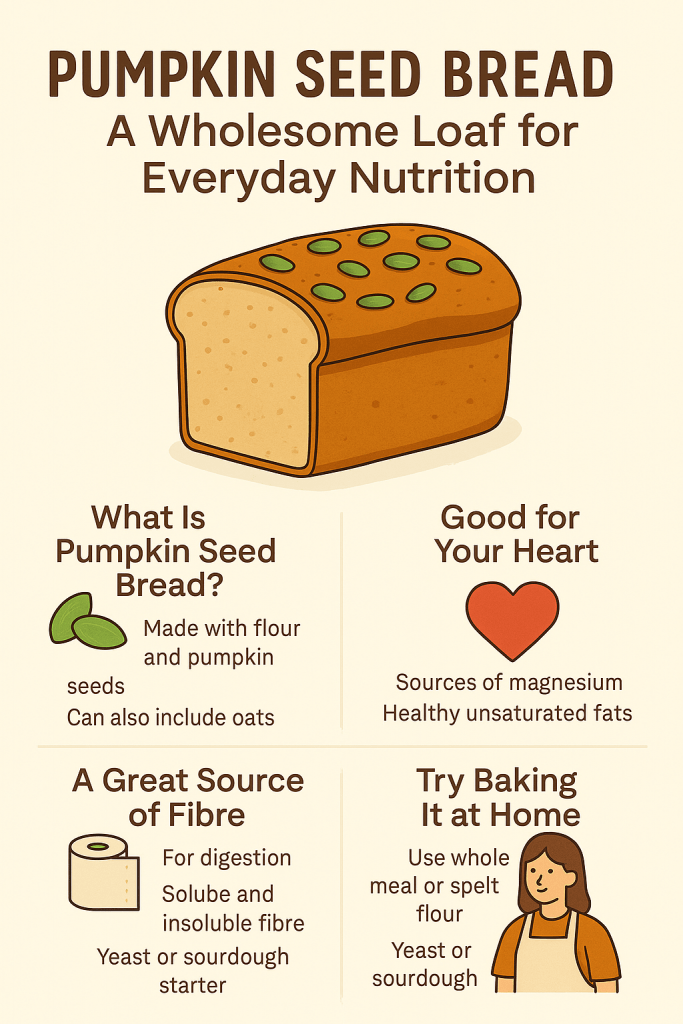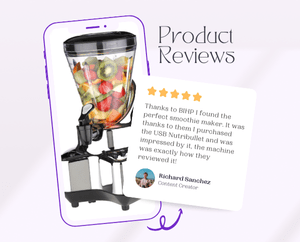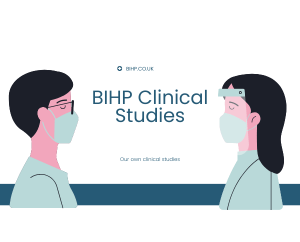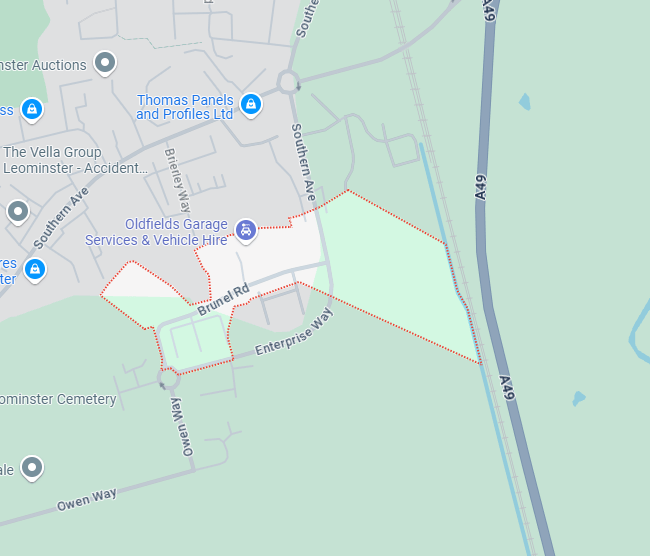🍞 Pumpkin Seed Bread: A Wholesome Loaf for Everyday Nutrition
Thinking of swapping your usual loaf for something a bit more nourishing? Pumpkin seed bread could be the upgrade your diet needs. It’s not just about flavour—the texture is satisfying, and the nutrients offer real benefits for your body.
This seeded loaf isn’t just delicious—it supports your heart, digestive system, and overall wellbeing. In this post, I’ll walk you through the benefits of pumpkin seed bread, how it fits into a balanced diet, and what to watch out for when shopping or baking your own.
🌱 What Is Pumpkin Seed Bread Made From?
As the name suggests, this bread is typically made with a combination of flour (wholemeal or spelt are popular choices) and raw or roasted pumpkin seeds. You’ll often see variations that include extras like linseeds, oats, or even sunflower kernels to boost the fibre and add extra texture.
Pumpkin seeds—also known as pepitas—are packed with nutrients. They provide a satisfying crunch while delivering plant-based protein, essential minerals, and a rich source of natural fats.
Because of this, pumpkin seed bread is often found in health food shops and artisan bakeries. It’s especially popular among those following a high-fibre or heart-healthy eating plan.
💓 Why Pumpkin Seed Bread Is Good for Your Heart
One of the standout benefits of pumpkin seed bread is how well it supports cardiovascular health. These tiny seeds are a great source of magnesium, which plays a key role in maintaining normal blood pressure levels.
You’ll also get a good dose of monounsaturated and polyunsaturated fats, which may help keep your cholesterol in check and reduce the risk of heart-related issues.
Together, these nutrients help keep your blood vessels relaxed and your circulatory system functioning smoothly.
So if your goal is to eat for heart health without giving up flavour or substance, this bread is a smart and satisfying option.
🧠 Supports Brain and Mood Too
On top of all that, pumpkin seeds naturally contain tryptophan—an amino acid known to support serotonin levels, which may contribute to mood balance.
Along with zinc and omega-3s, these nutrients can support brain function and help stabilise mood.
When enjoyed regularly as part of a nourishing diet, pumpkin seed bread may contribute to overall mental clarity and focus.
It’s not a miracle fix, but it certainly makes a wholesome and satisfying choice for breakfast or a mid-morning bite.
🧻 A Great Source of Fibre for Digestion
Another benefit of pumpkin seed bread is its fibre content. Fibre plays a vital role in gut health by helping food move efficiently through the digestive tract. It also feeds your gut bacteria, which helps maintain balance in your microbiome.
The fibre content includes both types—soluble and insoluble—each of which plays a unique role in digestion and blood sugar regulation.
Having it as part of your lunch or with a balanced topping can help you avoid energy dips in the afternoon.
If you’re looking for another wholesome alternative to shop-bought loaves, check out our guide to courgette cake. It’s light, nourishing, and a great way to use real ingredients without the usual additives.
👩🍳 Try Baking Pumpkin Seed Bread at Home
If you love trying new recipes, baking your own pumpkin seed bread is a nourishing and enjoyable way to improve your diet.
Baking it yourself means you’re in control of the recipe, with room to adapt it based on your personal needs.
Most recipes are fairly straightforward. They typically include:
-
Wholemeal or spelt flour
-
Yeast or sourdough starter
-
Salt and water
-
A handful of pumpkin seeds (and maybe some extras like sunflower or sesame)
Some bakers like to sprinkle seeds on top for an extra crunch. If you’re avoiding gluten, consider using alternatives like buckwheat flour or ground oats, along with a natural binding agent like psyllium husk.
🛒 What to Look for When Choosing Pumpkin Seed Bread
When browsing supermarket shelves or bakery displays, it’s worth looking closely at what’s actually inside the bread.
Choose loaves with whole ingredients and minimal processing. Look for descriptions such as “wholegrain,” “no refined sugars,” or “made with sourdough” to find better options.
Dense, textured bread usually indicates a higher seed content and better nutritional value, so don’t be swayed by light, fluffy slices.
As always, if the ingredients list is long and full of additives, it’s probably best to leave it on the shelf.
⚠️ A Few Things to Keep in Mind
Although pumpkin seed bread is generally well tolerated, those who are sensitive to high-fibre foods may want to introduce it gradually.
It’s also smart to enjoy moderate portions, especially if you’re managing your carbohydrate or calorie intake.
As with any food, balance is key. A slice or two a day, paired with other whole foods, is usually spot on. Research Health benefits of pumpkin seed.
📝 Final Thoughts
Pumpkin seed bread is more than just a tasty alternative to white toast—it’s a nutrient-dense option that supports heart health, digestion, and overall wellness. Whether you bake it at home or buy a high-quality loaf, adding it to your routine is a simple yet satisfying upgrade.
Next time you’re meal planning, why not swap your usual loaf for one rich in seeds and wholegrains? Your body—and your tastebuds—will thank you.
Here are a couple of articles you might find helpful:






